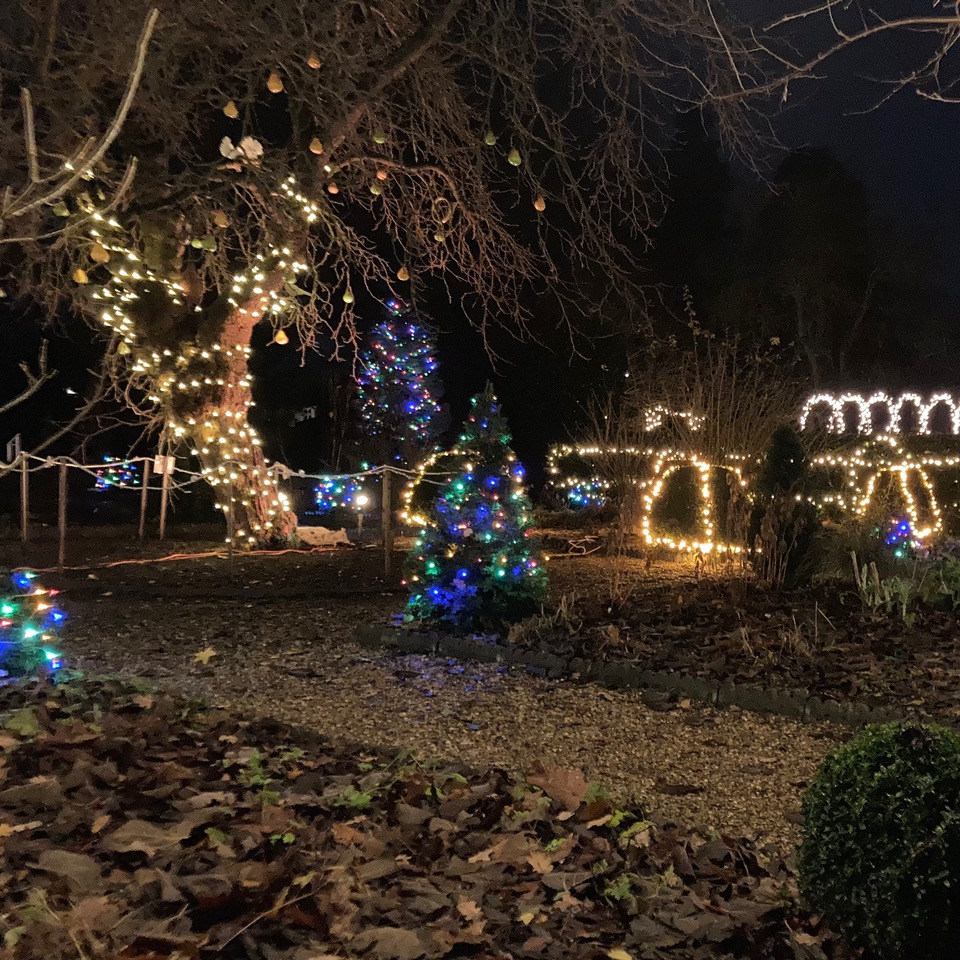Mandevilla

- Common name: Rock Trumpet
- Type: Semi-evergreen or deciduous woody climber
- Height: 7 m / 22 feet
- Aspect: Full sun
- Hardiness: Frost tender, minimum temperature 5 to 10°C
- Care: Moderate
Grown for its large trumpet shape flowers from late summer onwards into winter.
Want to find a Mandevilla at Reveley – look in the conservatory.
Even though this woody stemmed climber is more at home in the tropical and subtropical forests of central and south Western America and the West Indies – you can, believe it or not, grow it in the UK. Mandevillas are not frost hardy, and should be grown in a conservatory or heated greenhouse to give them the year-round sunlight and full winter protection that they need. Mandevillas will struggle as a houseplant because they thrive in full sun although they may need some light shade in summer to avoid leaf scorch.
Mandevilla’s can be confused with Dipladenia, which look very similar in flower and habit. Dipladenia are more compact, whereas Mandevilla are more vigorous. And, just to confuse you, all Dipladenia are Mandevilla!
Plant in a conservatory or the greenhouse border in good general-purpose compost such as John Innes No 3 with added grit to aid drainage. Place in full light but shade from scorching sunshine in summer. Mandevilla’s can be repotted in early spring. The plants will need warm humid conditions in spring to encourage the growth of the vigorous shoots which will provide that year’s flowers.
Water moderately in the growing season, then sparingly from October to February too much winter watering will rot the plants. Mist daily in the summer.
Established plants can be trimmed in late winter or early spring, to keep them in check, taking side shoots back to three or four buds of their permanent framework. Prune out dead, overcrowded or weak shoots.
The most common pest of Mandevilla’s are red spider mite and mealy bugs.
Propagate by seed in spring or softwood cuttings in early summer.
The genus was named after Henry Mandeville (1773-1861), a British diplomat, based in Argentina, and gardener. The genus was hybridised at Longwood Gardens in Pennsylvania, the popular variety “Alice duPont” was named after the wife of the founder of the gardens, Pierre duPont.





